Sunset Science
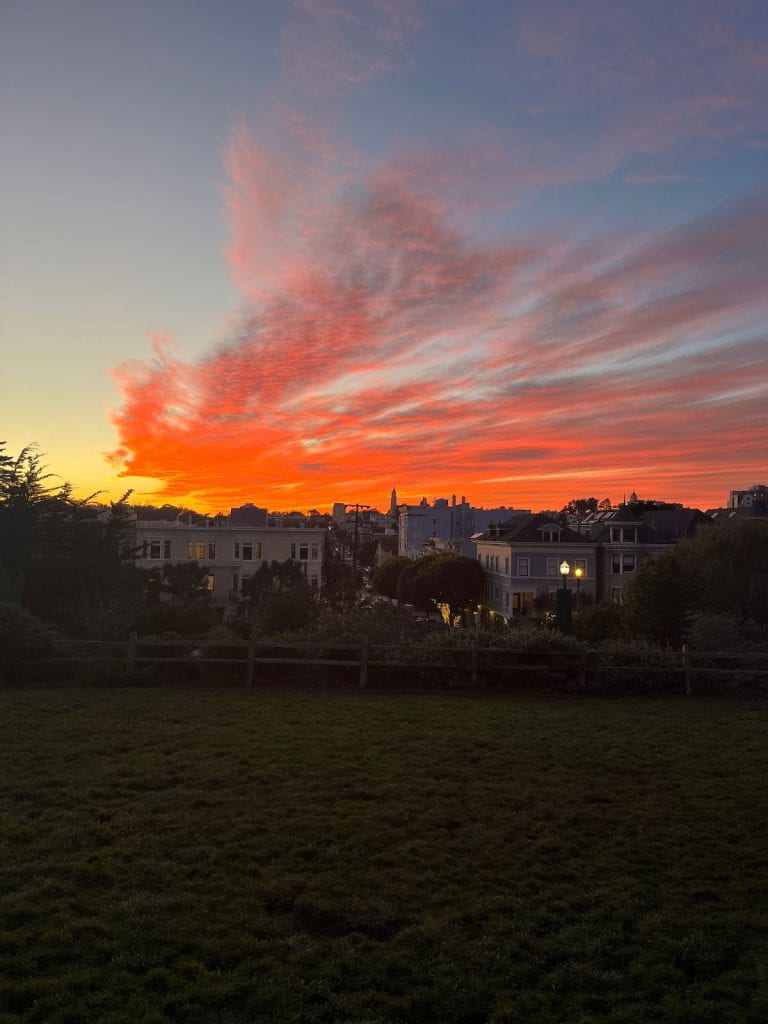
Image by Ana Zurcher.
A San Francisco winter brings rain, clouds, the occasional sunny day, and surprisingly, beautiful sunsets. At the end of a sunny day, I recommend making your way to Ocean Beach or to a
viewpoint like Alamo Square Park, where the golden light reflecting off of the wispy clouds will surely be a sight to see. Even if you’re not at the beach nor on top of a hill, all you have to do is look up from any street corner or window and see the vibrant, colorful clouds. You may have noticed that our San Francisco sunsets (if the clouds and rain give us the chance to see them at all) have been looking particularly striking lately, especially compared to the more hazy and monochromatic summer sunsets.
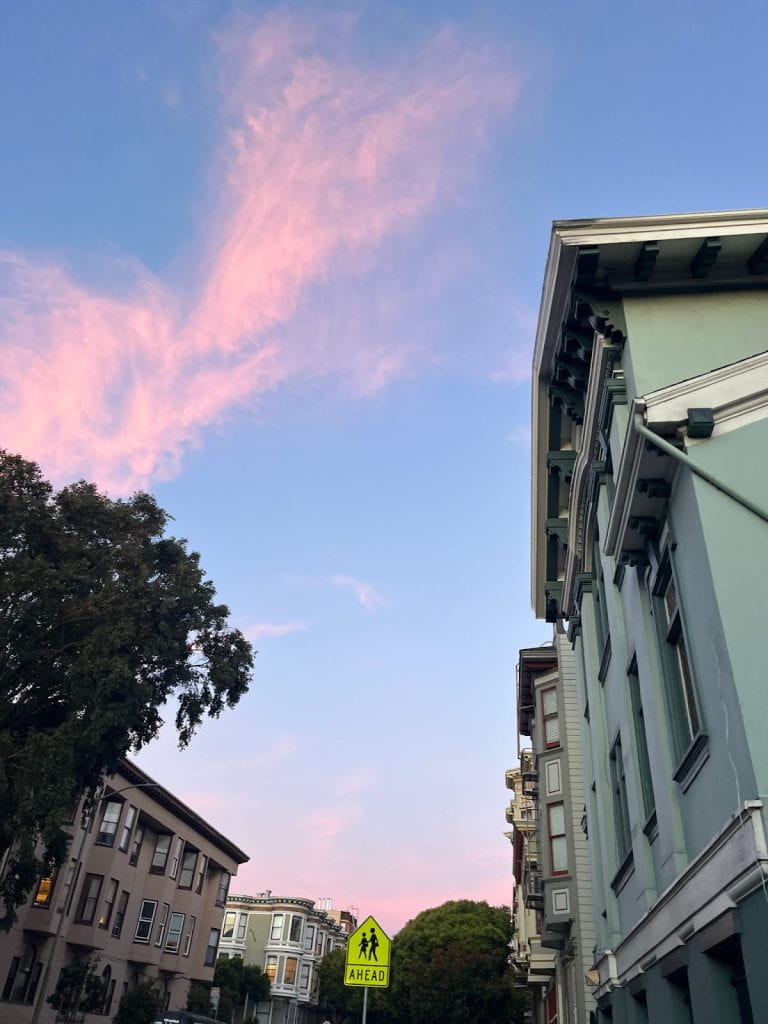
Image by Ana Zurcher.
What creates these beautiful colors? Why are they so vibrant in the winter? The answer, of course, lies in science.
To start off, we must discuss how sunsets occur in the first place. Sunsets are created by Rayleigh scattering, the same phenomenon responsible for making the sky blue. A beam of sunlight contains every color in the visible light spectrum, but as it travels to Earth, it encounters oxygen and hydrogen molecules, which act like mirrors, reflecting blue and violet light back into the atmosphere. Therefore, less blue and violet light make it to the earth and instead bounce around in the atmosphere, creating the blue sky we know and love. The following diagram makes Rayleigh scattering a little easier to understand:
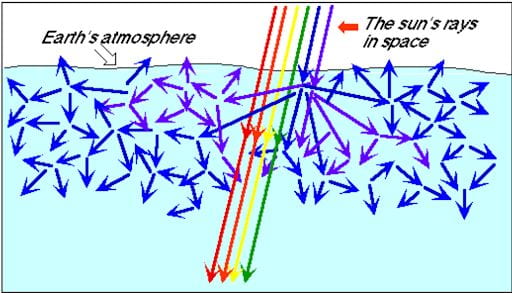
Image via https://www.vox.com/science-and-health/2019/11/22/20970563/sunset-science-explained-rayleigh-scattering
At sunset, the sun is at a lower angle, so the light has a longer distance to travel than during the day. This means that even more colors get filtered out. Because of this, instead of mostly blue and violet light bouncing around the atmosphere, there are also warm colors included, turning the sky those beautiful shades of pink, orange, and red.
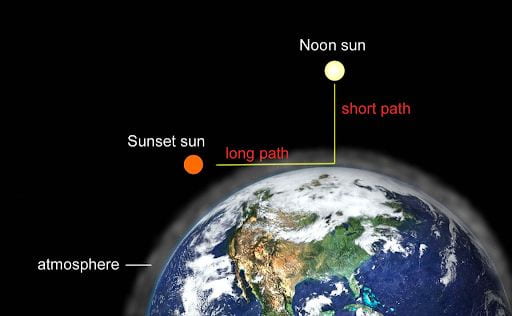
Image via http://astrobob.areavoices.com/
Now that we know the basic science of sunsets, let’s explore how the changing seasons impact sunsets. First of all, winter is San Francisco’s cloudiest season. Although all clouds increase a sunset’s texture and intrigue, not all clouds are created equal. Higher clouds produce more vivid sunset colors because they are able to intercept sunlight before most of its colors have been lost in the atmosphere. This means that mid to high level clouds, such as cirrus and altocumulus clouds, turn vibrant shades of orange, scarlet, and red, while low level clouds, such as stratus or stratocumulus, don’t. This diagram shows the different types of clouds and their corresponding height.
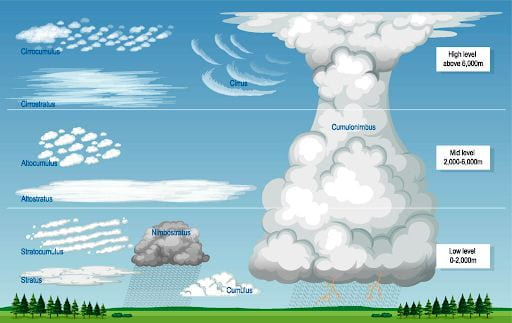
Image via https://worldinmaps.com/weather-and-climate/the-types-of-clouds-and-their-characteristics/
Storm systems, such as the ones responsible for our recent rain and windstorms, leave high and middle level clouds in their wake. These storm systems also form more dramatic cloud structures, making winter sunsets more varied and interesting. This means that when skies clear before or after a storm, sunsets become particularly vivid. Additionally, storm systems clear out particles in the air, whether natural or caused by human pollution. This prevents haze from accumulating like it does in the summer, muting the colors of sunsets. Additionally, when we are closer to the solstice, sunsets get longer. This is due to the sun setting at a lower angle during these times, drawing out the brilliant winter sunset colors more in December and early January. For these reasons, summer sunsets tend to produce more muted, hazy sunsets with fewer clouds to create texture.
A bright side of winter storms and rainy weather is the beautifully vibrant, colorful sunsets they help produce. Knowing a little about the science of sunsets can help us to connect what we see outside every day to larger patterns in our changing climate and seasons. However, part of the beauty of sunsets is that they are unpredictable and vary every day. So, on the next clear day this winter, try to get outside and enjoy the bright colors!


